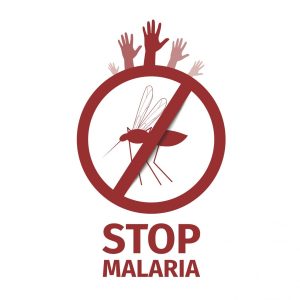Globally, myopia is the leading cause of distance refractive error, affecting 1.45 billion or 27% of the world’s population in 2010, and expected to increase to 52% by 2050. In addition to the increase in prevalence of myopia, there is evidence of rise in the severity of myopia.
Myopia is a major public health concern in many East Asian countries where the condition affects 80-90% of high school graduates. Of these individuals, 10-20% have sight-threatening pathologic myopia. There is a significant impact on the economy and on the quality of life regarding a patient’s physical, emotional and social functioning due to vision impairment related to myopia.
Pathologic myopia, which is the most severe form, has a high risk of cataract development, retinal detachment, glaucoma and even blindness. In the developing world, there is relatively poor access to vision testing and some people still believe that glasses can make the eyes worse. Globally, many cases of short sightedness are unrecognised and therefore untreated, even among schoolchildren.
A rapid increase in the incidence of myopia and its associated significant social and economic burdens have motivated researchers to study its causal factors, possible treatments and work on prevention.
Risk factors and etiology
The exact mechanism for development of myopia is not properly understood. It is theorised that both genetic as well as environmental factors are at play. A study of myopia and refractive error has found 24 genetic variations that were associated with a 10 fold increase in the prevalence of myopia which suggests that myopia has a multifactorial etiology rather than being a result of a single mechanism. Some environmental factors that have been identified as contributing to myopia development and progression are mentioned below:
- Usage of computers and handheld technologies for long hours
- Insufficient time spent outdoors.
- Low levels of vitamin D.
- Inadequate light exposure and poor diet.
- Variations in blood sugar levels in people with diabetes or early cataract development
- Side effect of drugs such as ethosuximide, hydrochlorothiazide
Clinical features
The main symptom is difficulty with distance vision. Children with myopia may read books and do close work well, but face difficulty when it comes to seeing distant objects such as signs and boards at school. If the short-sightedness starts earlier, it is likely to become more severe. The peak of short-sightedness is usually reached by the time of early adulthood. Although myopia most commonly afflicts children, it may also develop in adults due to visual stress or health conditions such as diabetes.
Diagnosis of myopia
Diagnosis depends on a complete history and thorough clinical assessment. Several procedures may be used for testing myopia which are aimed to measure how the eye focuses light, and to determine the power of any optical lenses needed to correct the reduced vision.
One such test which measures visual acuity (the clarity or sharpness of vision) is done using the Snellen chart. The Snellen Chart is printed with eleven rows of block letters. The first row consists of one very large letter, and subsequent rows have increasing numbers of letters that decrease in size. A person taking the test covers one eye from 6 metres away, and reads aloud the letters of each row. The smallest row that can be read accurately indicates the visual acuity in that specific eye. Normal distance visual acuity is 6/6 vision. If you have 6/6 vision, you can see clearly at 6 metres objects that can normally be seen at that distance. If you have 6/12 vision, it means that you need to be as close as 6 metres to see what a person with normal vision can see at 12 metres,
Doctors also use an instrument called a phoropter in which a series of lenses are placed in front of a patient’s eyes and measure how they focus light using a handheld lighted instrument called a retinoscope.
Types of myopia
Myopia is generally classified into two groups:
- Non- pathologic myopia, also referred as physiological, simple or school myopia. In this type, the refractive structures of the eye develop within normal limits, but the refractive power of the eye does not correlate with the axial length.
- Pathologic myopia is a more severe form and is generally classified as a high myopic refractive error that is progressive and generally presents very early in childhood. Patients are at greater risk of developing progressive retinal degeneration and other vision threatening pathology.
Complications
The majority of people with short-sightedness have no associated problems. However, people with severe short-sightedness as in pathologic myopia have an increased chance of developing other eye conditions. These include raised pressure in the eye (glaucoma), detached retina and macular degeneration which threatens the vision. Hence regular eye checks are advisable.
Treatment of Myopia
There are several options available for the people with myopia to regain clear distance vision. They include:
1. Eyeglasses
The simplest, cheapest and safest way to correct short-sightedness is with eyeglasses. Minus lenses (concave prescription lenses) are used to bend light rays slightly outward to counteract the over-focusing tendency which results in the light rays focusing further back in the eye on the retina. Depending on the amount of myopia, people only need to wear glasses for certain activities, like watching a movie or driving a car.
2. Contact lenses
They sit right on the surface of the eye and do the same job as glasses. Lenses may be soft or rigid and gas-permeable. They can be daily disposable, extended wear, monthly disposable or non-disposable. Contact lenses tend to be more expensive than glasses and also require more care and meticulous hygiene.
3. Corneal Refractive Therapy (CRT)
This a nonsurgical procedure in which people wear a series of specially designed rigid contact lenses to gradually reshape the curvature of cornea which in turn place pressure on the cornea to flatten it. Contact lenses are worn for limited periods, such as overnight, and then removed.
4. Surgery
Laser eye surgeries such as LASIK (laser in situ keratomileusis) or PRK (photo-refractive keratectomy) which are generally painless procedures are expensive, but offer the chance to restore normal sight permanently.
5. Vision therapy (various eye exercises) for people with stress-related myopia
Apart from above treatment options there are several other options which help to decrease or halt the progression of myopia. These include prescribing atropine eyedrops which has shown reduction in rate of progression of myopia of up to 50% in Asia.
Myopia Prevention
Currently there are no clear guidelines for preventing myopia, but there are various therapeutic modalities which have been implemented for treatment of myopia. Some of these are as follows:
- Using bifocals, progressive lenses and multifocal contact lenses.
- Eye drops such as atropine and pirenzepine.
- Overnight rigid contact lenses.
- Increasing outdoor activity
Prognosis
Early onset and high myopia have a worse prognosis for long term visual acuity. These patients tend to have higher rates of myopic progression and greater risk of developing retinal degeneration and other eye problems.











